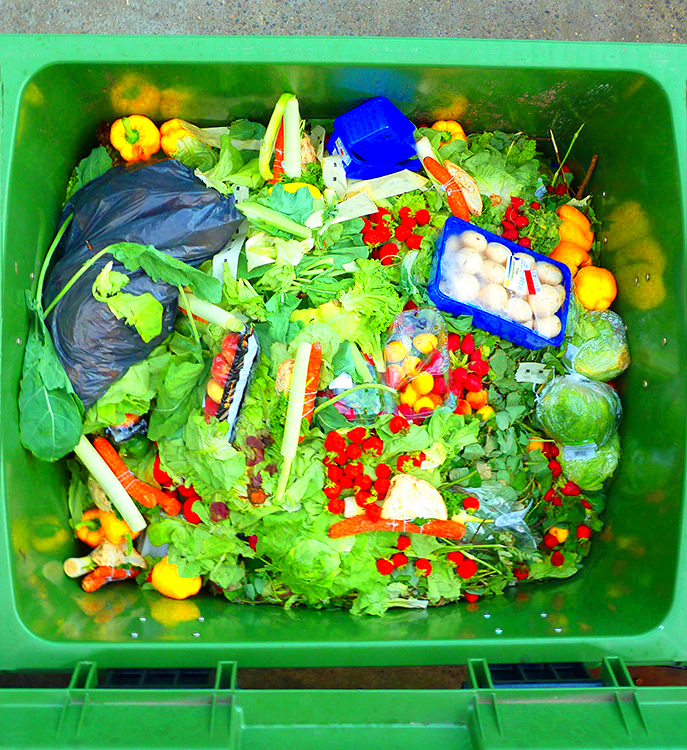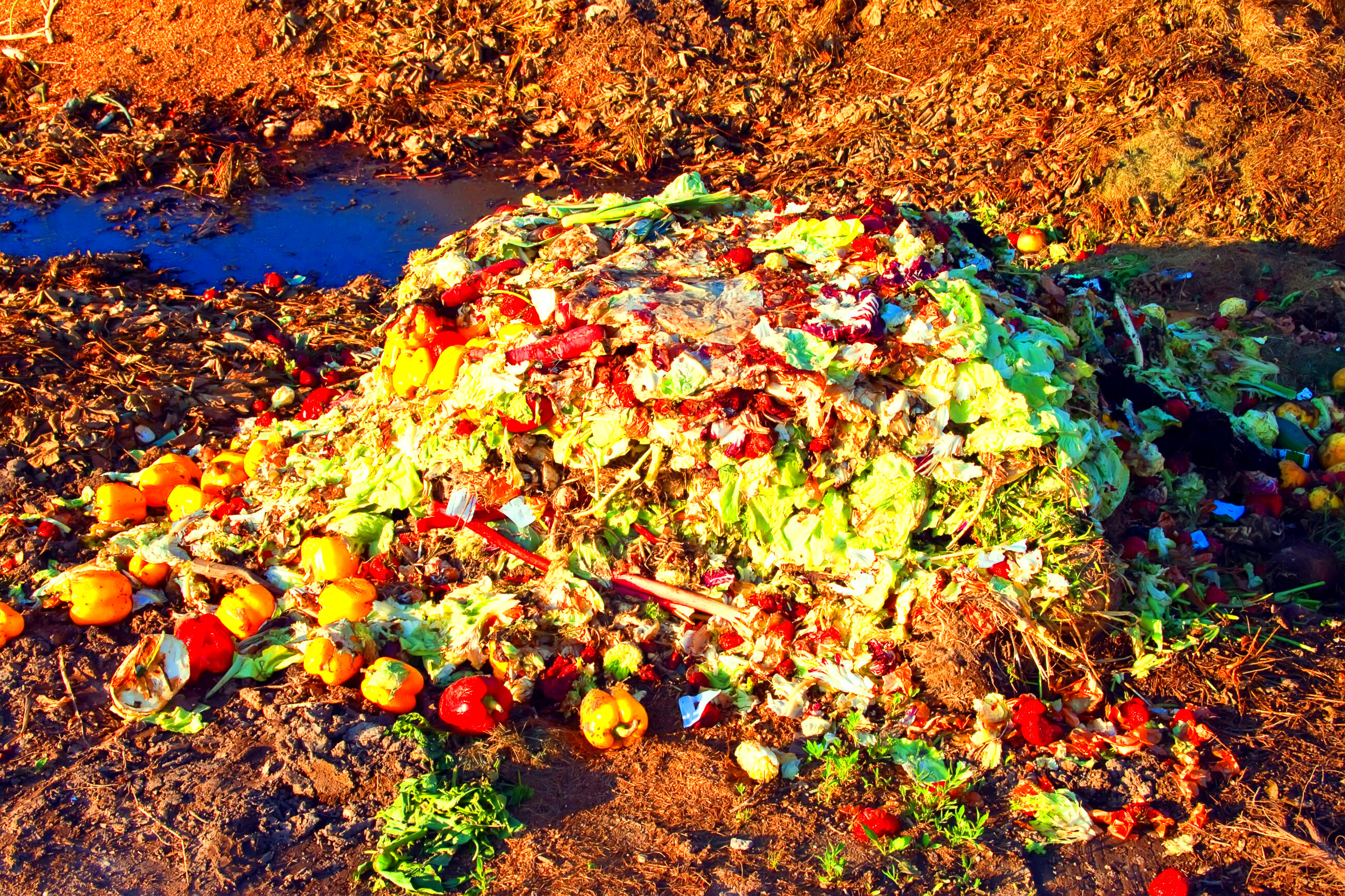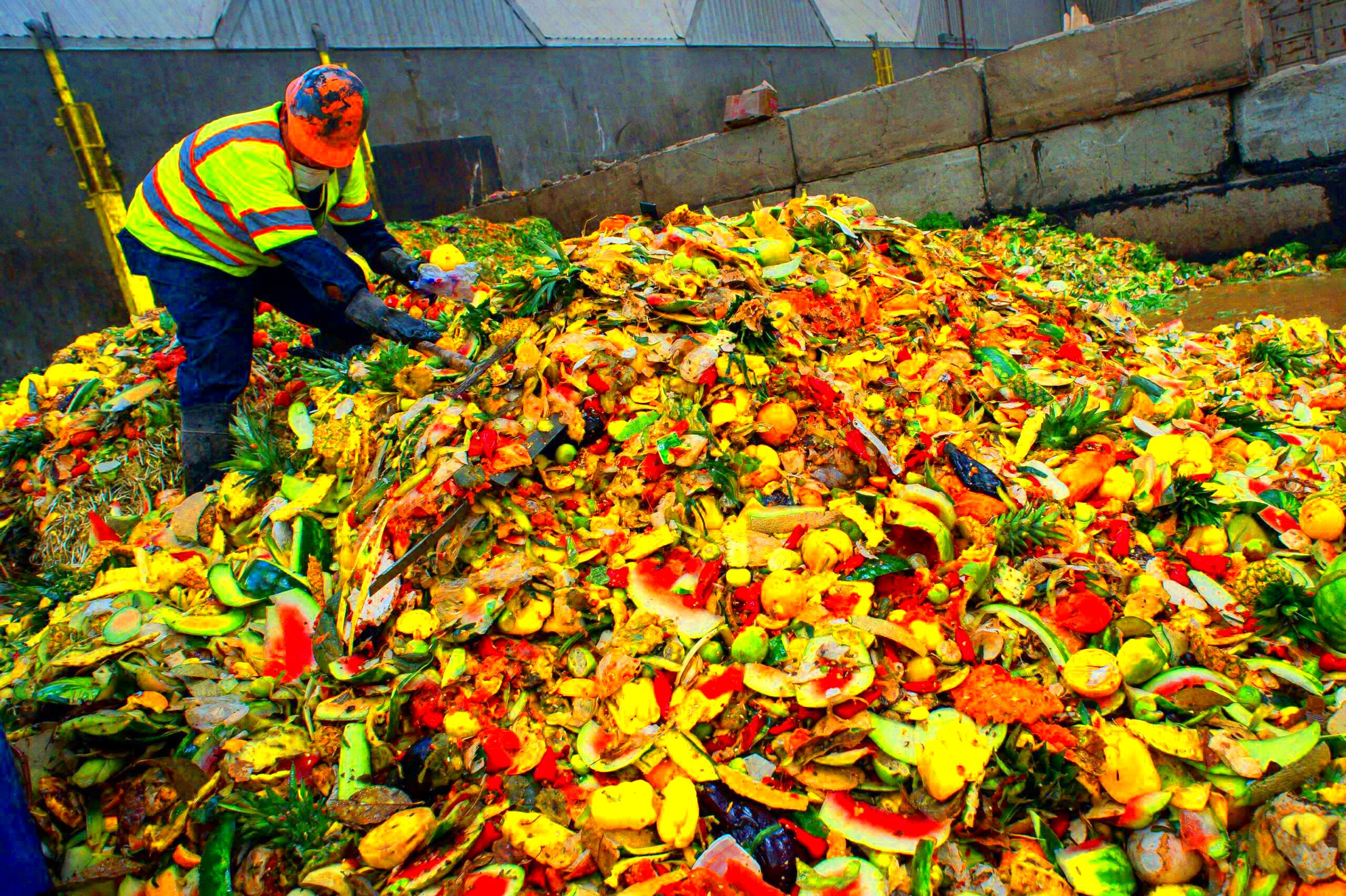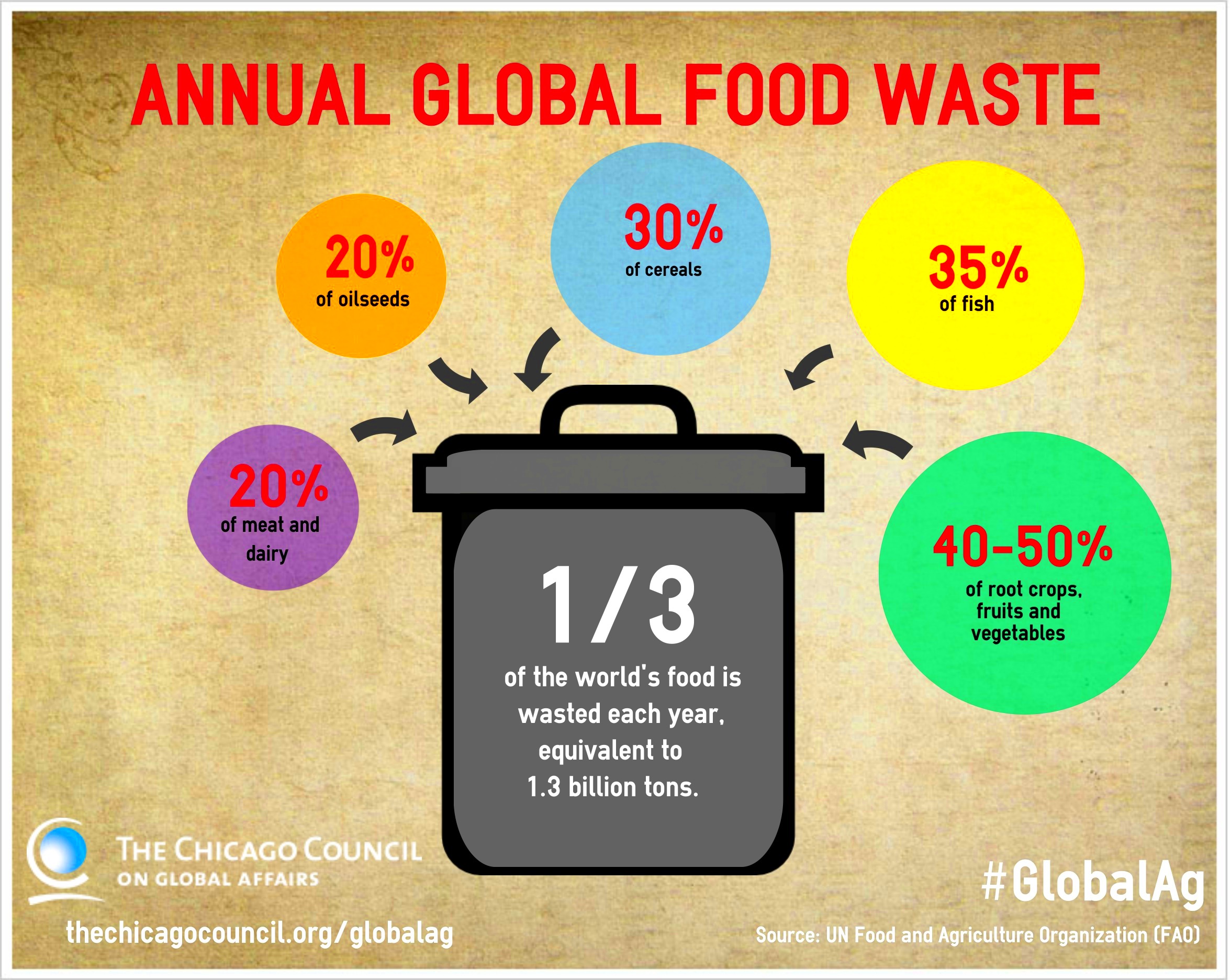Food wastage is a major problem in the United States of America, both for environment and society. In addition to resource loss, this results in environmental problems that are aggravated as millions of tons of food get wasted every year.Therefore, it is important for all of us to understand the size and impact of this phenomenon, because with such knowledge it would be possible to avoid waste creation and focus on sustainability instead.
Statistics Highlighting the Problem of Food Waste

We may feel amazed at the statistics regarding food wastage. For instance, these figures depict how serious this crisis is:
- Approximately 40% of all food produced in the USA is wasted, equating to about 133 billion pounds annually.
- Food waste contributes to 18% of greenhouse gas emissions, making it a major environmental concern.
- The average American household throws away around $1,500 worth of food each year.
- Restaurants contribute significantly to food waste, with around 15% of food prepared being discarded.
These numbers indicate that discarding food remains more than an individual concern; it’s a serious problem on a national scale which requires pooled efforts to solve it.
Reasons Behind Food Wastage in Households

It is important to understand reasons behind food wastage in domestics in order to make the solutions we are advocating more practical. Some typical reasons include:
- Poor Planning: Many people buy more food than they need, leading to spoilage.
- Expiration Dates: Confusion over "sell by" and "use by" dates often results in perfectly good food being thrown away.
- Leftovers: Uneaten leftovers frequently end up in the trash instead of being saved for later.
- Overcooking: Cooking too much food without a plan for leftovers can lead to waste.
- Visual Appeal: Consumers often reject fruits and vegetables that are misshapen or blemished, despite them being perfectly edible.
So as recognizing these reasons we can start bringing changes in our shopping and cooking habits that will help in minimizing waste.
Impact of Food Wastage on the Environment

We must consider that the consequences of discarding comestibles are not limited only to loss of materials; they stretch into how it influences our ecosystem at large. Dumped food may go into garbage which decomposes in these heaps emitting methane gas, an extremely powerful greenhouse gas responsible for climatic alterations. Environmental repercussions explained:
- Greenhouse Gas Emissions: Food waste generates about 8-10% of global greenhouse gas emissions.
- Water Waste: It takes approximately 1,800 gallons of water to produce just one pound of beef. When food is wasted, all that water is wasted too.
- Deforestation: As food production expands to meet demand, forests are cut down, disrupting ecosystems and increasing carbon emissions.
- Soil Degradation: Excessive food production can lead to soil erosion and degradation, diminishing the land's ability to grow crops in the future.
Food wastage is about more than just saving dollars; it’s an important milestone in the fight against climate change and guaranteeing food systems that can sustain themselves for years to come.
Efforts to Reduce Food Waste by Organizations

Numerous organizations are struggling with the serious problem of food waste. Here are a few instances:
- Food Rescue Programs: Organizations like City Harvest and Feeding America work to collect surplus food from restaurants and grocery stores, redistributing it to those in need.
- Awareness Campaigns: Initiatives like the Food Waste Reduction Campaign aim to educate consumers on the importance of minimizing waste.
- Research and Innovation: Some organizations are investing in technology to create apps that connect consumers with nearby food sources, reducing waste and promoting local food systems.
- Partnerships with Businesses: Collaborations with supermarkets and food producers help establish better inventory management practices to prevent overproduction.
The collective specialties show that, if organizations unite, we can vastly cut back on food waste and create a more sustainable future.
Practical Tips for Reducing Food Waste at Home
Easier than it may sound, food waste reduction at home is not that difficult. To help you in this regard, here are some pragmatic suggestions:
- Plan Your Meals: Create a weekly meal plan to avoid buying unnecessary items.
- Make a Shopping List: Stick to your list to minimize impulse purchases that may go unused.
- Store Food Properly: Learn the best ways to store fruits and vegetables to extend their shelf life.
- Use Leftovers Creatively: Get creative with your leftovers. Make soups, casseroles, or smoothies instead of tossing them out.
- Compost: Consider composting food scraps and peels instead of sending them to the landfill.
It is possible to reduce food wastage at the same time as saving money and resources by embracing such routines in your day-to-day life.
How Food Wastage Affects Local Communities
Not only does food wastage have an impact on the natural world, but it also severely affects the inhabitants of a district. We tend to ignore that when it comes to food we have wasted it means a lot for others around us. The following are some of its attached ripples to community.
- Increased Hunger: With millions of tons of food wasted each year, many people in communities still face food insecurity. This paradox highlights a systemic issue where surplus food could feed those in need.
- Resource Drain: Food that is wasted means resources such as labor, water, and energy were also wasted. This can strain local economies and contribute to higher food prices.
- Community Initiatives: Communities lose out on opportunities to create programs aimed at redistributing excess food, such as food banks or community kitchens, which can help those in need.
- Environmental Effects: Local communities bear the brunt of the environmental impacts from food waste, including pollution and the strain on local landfills.
Governing the communities and combating through food waste to overcome starvation and equitable food systems is aggravated to equal rights authorities. That is how we can all join hands so that every individual can comfortably afford the available basic food.
Frequently Asked Questions About Food Wastage
Grasping food waste appears to be a hard nut to crack, and numerous persons often ask themselves questions regarding it. To throw more light on this important subject, let us look at some of the common questions asked:
What is food wastage?
- Food wastage refers to food that is discarded or not consumed, often due to spoilage, overproduction, or consumer habits.
How much food is wasted in the USA?
- Approximately 40% of the food produced in the USA goes to waste, amounting to around 133 billion pounds each year.
What are the environmental impacts of food waste?
- Food waste contributes significantly to greenhouse gas emissions, resource depletion, and environmental degradation.
How can individuals help reduce food waste?
- Planning meals, shopping smart, and creatively using leftovers are some effective ways to reduce food waste at home.
Are there organizations that help reduce food waste?
- Yes, many organizations work to rescue surplus food and redistribute it to those in need, such as food banks and local charities.
Answering these questions we will be able to create awareness and motivate take part in fighting with food waste in our neighborhoods.
Conclusion on Addressing Food Wastage in the USA
To wrap it up, fighting off food waste in the USA should be prioritized so that the nation can have a food system that is sustainable and fair. Food waste data is so alarming that it demonstrates how much resources are lost as well as opportunities for helping people who do not have enough. These are some main highlights to take note of:
- Awareness: Raising awareness about the issue of food waste is the first step toward change.
- Community Involvement: Encouraging community involvement and collaboration can lead to innovative solutions and support for local food initiatives.
- Personal Action: Every individual can make a difference by implementing practical tips to reduce waste in their own homes.
- Support Organizations: Supporting organizations that work to redistribute food can help bridge the gap between surplus and need.
If we adopt these measures together, we would be able to eliminate wastage of foods, help local inhabitants through various community programs as well as reduce the destruction of the surroundings. Now is the moment for us to start making changes that count!
 We may feel amazed at the statistics regarding food wastage. For instance, these figures depict how serious this crisis is:
We may feel amazed at the statistics regarding food wastage. For instance, these figures depict how serious this crisis is: It is important to understand reasons behind food wastage in domestics in order to make the solutions we are advocating more practical. Some typical reasons include:
It is important to understand reasons behind food wastage in domestics in order to make the solutions we are advocating more practical. Some typical reasons include: We must consider that the consequences of discarding comestibles are not limited only to loss of materials; they stretch into how it influences our ecosystem at large. Dumped food may go into garbage which decomposes in these heaps emitting methane gas, an extremely powerful greenhouse gas responsible for climatic alterations. Environmental repercussions explained:
We must consider that the consequences of discarding comestibles are not limited only to loss of materials; they stretch into how it influences our ecosystem at large. Dumped food may go into garbage which decomposes in these heaps emitting methane gas, an extremely powerful greenhouse gas responsible for climatic alterations. Environmental repercussions explained: Numerous organizations are struggling with the serious problem of food waste. Here are a few instances:
Numerous organizations are struggling with the serious problem of food waste. Here are a few instances:
 admin
admin








